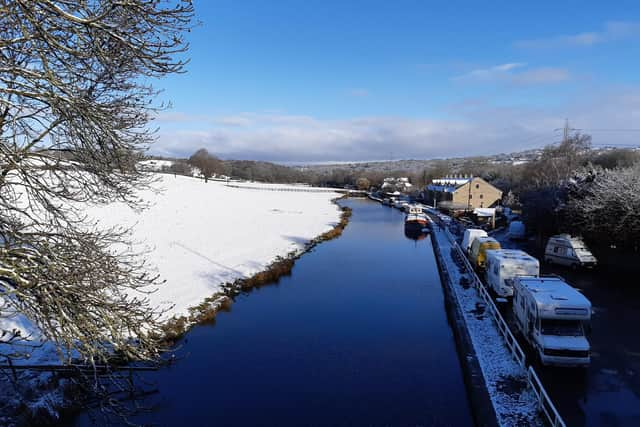Leeds snow: Met Office issues weather warning for ice after snow blankets Leeds
and live on Freeview channel 276
The city woke up to heavy snowfall, which has caused heavy traffic and delays to flights at Leeds Bradford Airport.
Flurries of snow are expected throughout the day and a yellow weather warning for ice has been issued for parts of the city.
Advertisement
Hide AdAdvertisement
Hide AdThe warning currently covers northern and eastern areas of Leeds, including Wetherby and Garforth, and is in place from 9pm tonight until 10am on Friday morning.


Forecasters warn that snow and hail showers could lead to icy surfaces, with possible travel disruption.
Some injuries from slips and falls on icy surfaces are possible, as well as icy patches on some untreated roads, pavements and cycle paths.
How to drive safely in snow
How to drive safely in snow
- Slow down
Snow, ice and water on the road reduce grip and, coupled with poor visibility in bad weather, they mean it’s essential that you cut your speed.
Advertisement
Hide AdAdvertisement
Hide AdStopping distances can be 10 times greater in snow and ice so slowing down gives you more time to react to other traffic or hazards on the road ahead.
However, be careful that you don’t drive so slowly that you risk losing momentum. On snow-covered roads and especially on hills this could see you stuck and struggling to get moving again.
- Keep it smooth
As well as keeping your speed down you need to keep your inputs smooth. Sharp acceleration, braking or steering are more likely to cause your car to lose grip, leaving you with no control.
Where you can, try to use engine braking to slow down, that way you’re less likely to skid.
- Leave more space
Advertisement
Hide AdAdvertisement
Hide AdWith stopping distances seriously increased by slippy conditions it’s vital you leave more space between your car and the vehicle in front.
It’s also important to try and anticipate what other drivers are doing - being properly aware could save you from a crash or being stranded as others grind to a halt. It also means you're less likely to have to brake or steer suddenly.
- Use a high gear
If your car is struggling to find grip, especially when pulling away, trying selecting a higher gear. This should reduce the amount of wheelspin and help you get moving.
- Stay seen
With shorter days and the prospect of rain, fog or snow making visibility worse, it's important to make sure you can see and be seen. Check all your lights work and are clear of snow or ice before setting off.
Advertisement
Hide AdAdvertisement
Hide AdDon't wait until it's pitch black to use your headlights and don't just rely on running lights when conditions deteriorate. If it's snowing heavily, dipped beams may actually work better than full beams.
Support the YEP and become a subscriber today. Enjoy unlimited access to local news and the latest on Leeds United. With a digital subscription, you see fewer ads, enjoy faster load times, and get access to exclusive newsletters and content. Click here to subscribe.
